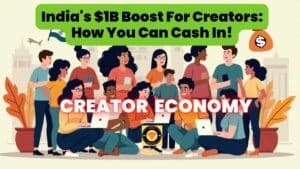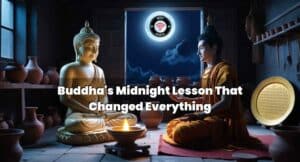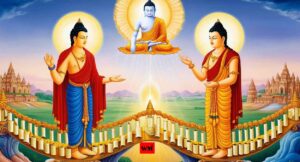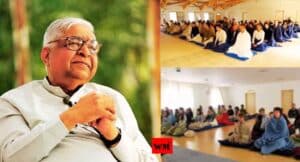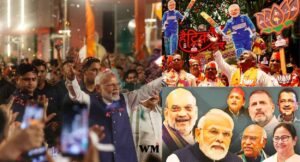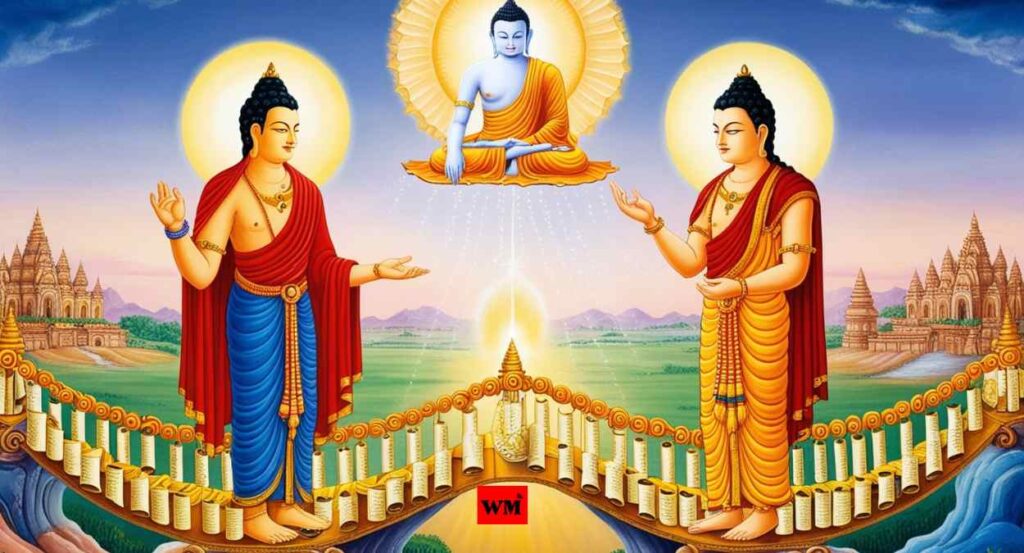
Buddha’s Teachings: The Ultimate Diplomatic Tool?
Dhamma, the ultimate jewel, has the power to transform lives and forge unlikely friendships. The story of Kings Pukkusāti and Bimbisāra showcases how the Buddha’s teachings bridged vast distances, creating a bond stronger than any material gift. This tale from ancient India not only highlights the diplomatic relations of the time but also illustrates the profound impact of Dhamma on individuals and societies. Let’s dive into this fascinating historical account and explore its relevance in our modern world.
In the words of the ancient Pali verse:
Yaṃ kiñci ratanaṃ loke, vijjati vividhā puthu; Ratanaṃ dhamma samaṃ natthi, tasmā sotthi bhavantu te.
“There are precious gems in the world, none of them is like the gem of Dhamma. By this truth may you be blessed.”
This verse encapsulates the essence of our story, reminding us that the true treasure lies not in material wealth, but in the wisdom of the Buddha’s teachings.
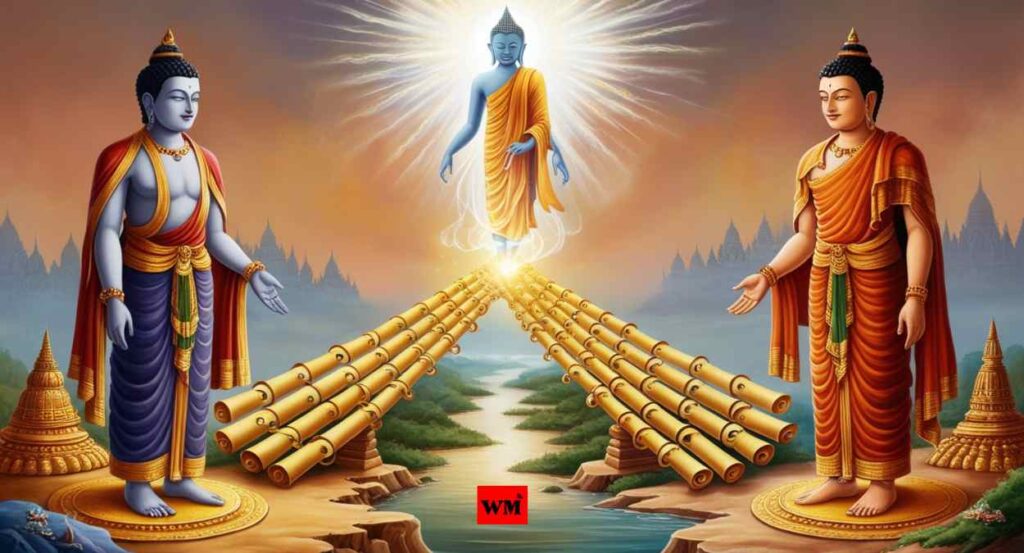
The Dawn of an Unexpected Friendship
In the bustling kingdom of Magadha, ruled by the wise King Bimbisāra, an opportunity for international diplomacy arose from an unexpected source – a group of traders from distant Takkasilā.
A Chance Encounter
Picture this: A caravan of weary traders arrives at the grand palace of Rājagaha, bearing gifts from their homeland. King Bimbisāra, always eager to expand his network, strikes up a conversation:
“From which kingdom have you come?” he inquires. “Takkasilā, the capital city of Gandhāra, lord,” they reply. “Who is your ruler?” “The king Pukkusāti, sir.” “Is he a dhammic king?” “Very dhammic, sir. He looks after his people like his children, taking their joys and pains as his own.” “What is his age?” “As much as yours, sir.”
Bimbisāra’s interest is piqued. A ruler of similar age, with a reputation for compassion? This could be the start of something remarkable. He exclaims, “My age? And also fulfilling the ruler’s dhamma of being gentle and loving towards his people, just like me! I would certainly like to establish friendly relations with such a person.”
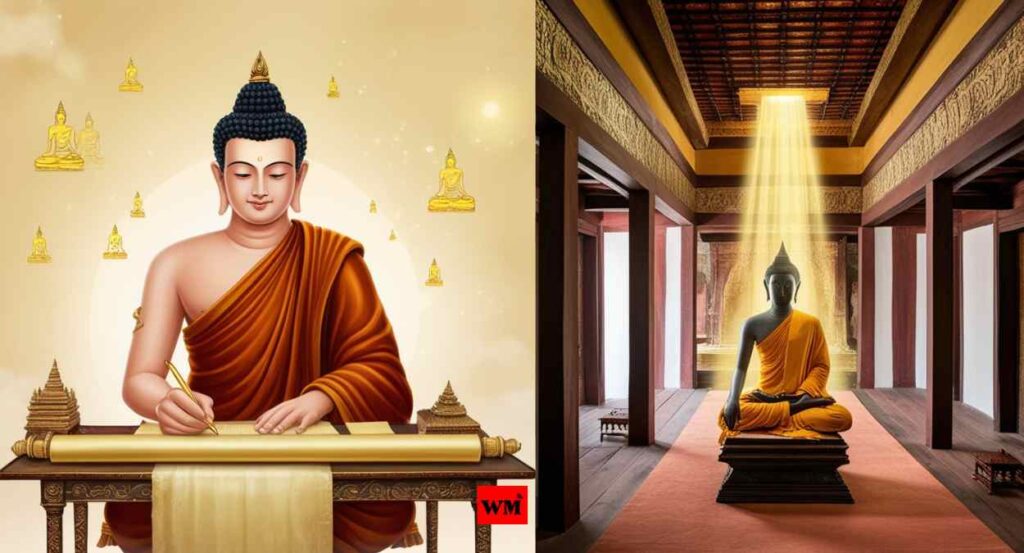
Bridging the Distance
With no high-speed transport or instant messaging, forging international ties was no easy feat. Yet, Bimbisāra saw an opportunity. He tasked the traders with a mission: to convey a message of friendship to King Pukkusāti upon their return.
“When you meet the king Pukkusāti,” Bimbisāra instructed, “having asked about his well-being a few times, tell him that I am eager to make him my friend. Convey a deep sense of friendliness on my behalf.”
The traders, honored by this responsibility, agreed wholeheartedly. Little did they know they were setting in motion a chain of events that would change the course of both kingdoms.
When the traders returned to Takkasilā and delivered Bimbisāra’s message, King Pukkusāti was overjoyed. To be friends with the Emperor of such a vast and powerful kingdom as Magadha was truly a matter of great pride for him. To strengthen this friendship, he took many judicious political steps, including declaring all traders from Magadha as royal guests in his kingdom.
This tale of unexpected friendship reminds us that even in ancient times, leaders sought connections beyond their borders. It sets the stage for an exchange that would transcend mere political alliances, leading to a sharing of the most precious gift of all – the Dhamma.
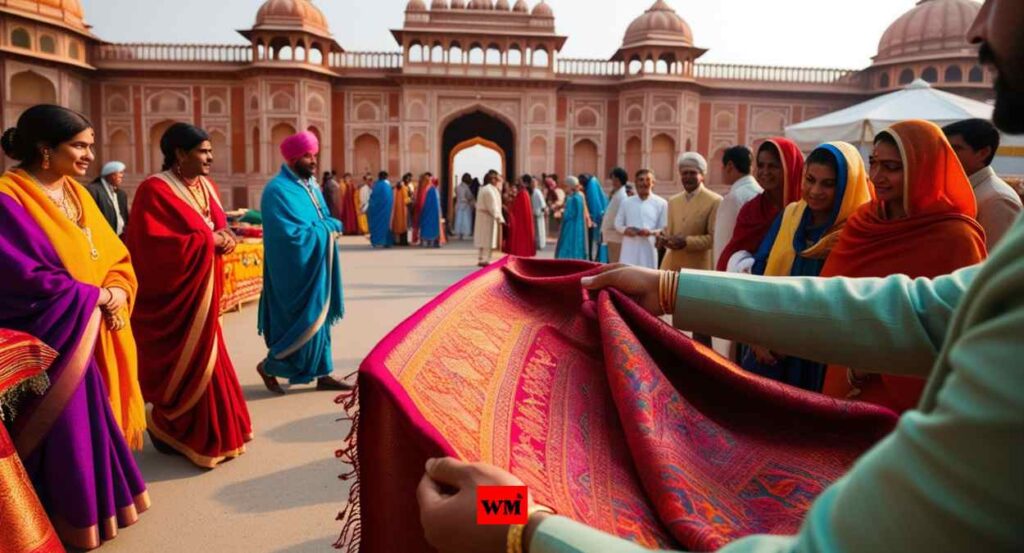
The Exchange of Gifts: From Material to Spiritual
As news of this budding friendship spread, both rulers sought to cement their bond through the age-old tradition of gift-giving. But these weren’t just any presents – they were symbols of each kingdom’s finest offerings.
Gandhāra’s Exquisite Shawls
King Pukkusāti sent a truly magnificent gift: eight of the most exquisite Kashmir woolen shawls. Imagine the scene as the ornate box was opened in Rājagaha:
- Vibrant colors that had never been seen before
- Fabric so delicate it felt like a whisper against the skin
- Each shawl measuring an impressive 8 arms-width by 16 arms-length
The citizens of Magadha were awestruck. Even King Bimbisāra, accustomed to luxury, was deeply moved. He shared the bounty, sending four shawls to the Buddha and keeping four for the royal palace.
Bimbisāra’s Dilemma: What Gift Could Compare?
King Bimbisāra found himself in a quandary. How could he possibly reciprocate with a gift of equal or greater value? As a follower of the Buddha’s teachings, he had come to realize that material possessions, no matter how precious, paled in comparison to the true jewel he had discovered – the gift of Dhamma.
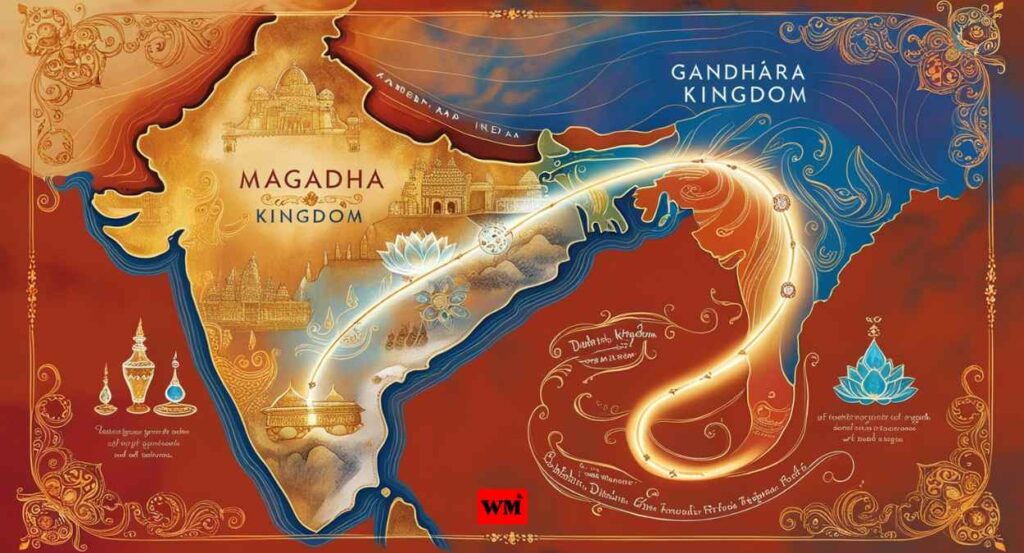
The Ultimate Gift: Sharing the Dhamma
In a stroke of inspiration, Bimbisāra decided to share the most valuable treasure he possessed – the teachings of the Buddha. This wasn’t just a diplomatic gesture; it was an act of profound generosity that could potentially transform an entire kingdom.
Crafting a Golden Message
With reverence and care, Bimbisāra set about creating a truly unique gift:
- He commissioned a long, golden sheet – neither too thin to break nor too thick to fold.
- Dressed in simple white clothes, he observed eight precepts and began to write.
- Using a golden pen and special red ink, he outlined the core teachings of the Buddha.
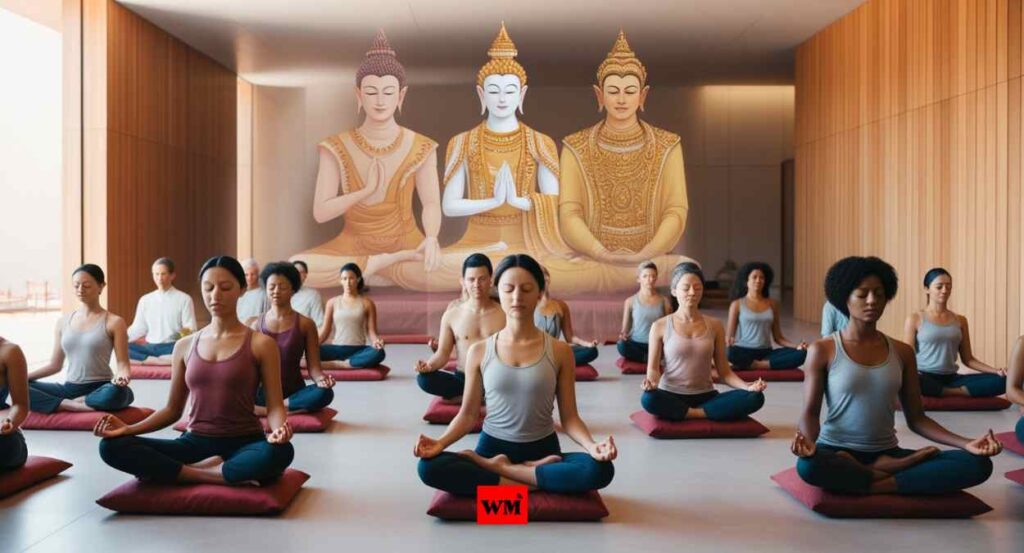
The Contents of the Golden Letter
Bimbisāra’s message was a comprehensive introduction to the Buddha’s teachings:
- The qualities of the Tathāgata (the Buddha)
- The Buddha’s life story, from birth to enlightenment
- An overview of the Dhamma, described as “well-explained, immediately effective, to be seen for oneself”
- A brief explanation of the 37 factors of enlightenment
- The importance of samādhi (concentration) in achieving liberation
- The noble eightfold path and the four stages of enlightenment
- A description of the Sangha and its worthy members
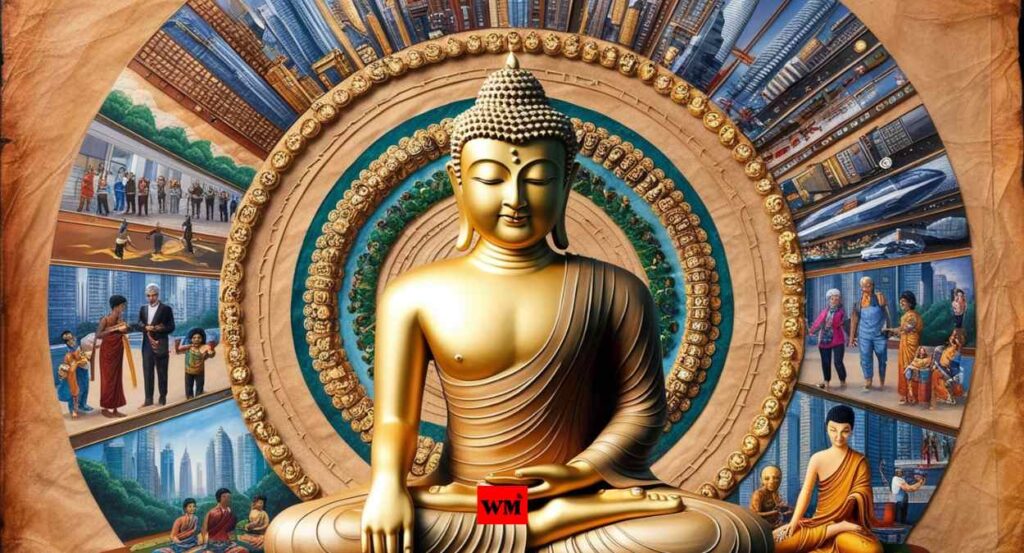
The Gift of Vipassana
Realizing that theory alone wasn’t enough, Bimbisāra included instructions on 16 types of Anapana meditation. He also made a bold suggestion – if Pukkusāti felt drawn to these teachings, he should consider abdicating his throne and seeking ordination under the Buddha himself.
The Impact of Dhamma: A Lasting Legacy
The exchange between these two kings wasn’t just a footnote in history. It set in motion a series of events that would have far-reaching consequences:
- Spread of Buddhism: This interaction helped introduce Buddha’s teachings to the Gandhāra region, eventually leading to its spread further into Central Asia.
- Cultural Exchange: The sharing of gifts and ideas fostered greater understanding between the two kingdoms.
- Personal Transformation: As we’ll explore later, this gift of Dhamma had a profound impact on King Pukkusāti’s life.
- Diplomatic Innovation: Using spiritual teachings as a diplomatic tool was a novel approach that strengthened ties between nations.
Lessons for Modern Times
While the world has changed dramatically since the time of Bimbisāra and Pukkusāti, there are valuable lessons we can draw from their story:
- The Power of Genuine Friendship: International relations don’t have to be cold and transactional. Genuine goodwill can foster lasting partnerships.
- Looking Beyond Material Wealth: True value often lies in wisdom and teachings that can transform lives.
- The Universality of Dhamma: The Buddha’s teachings transcend borders and cultures, offering a path to happiness for all.
- Innovation in Diplomacy: Sometimes, thinking outside the box can lead to unexpected and powerful results in international relations.
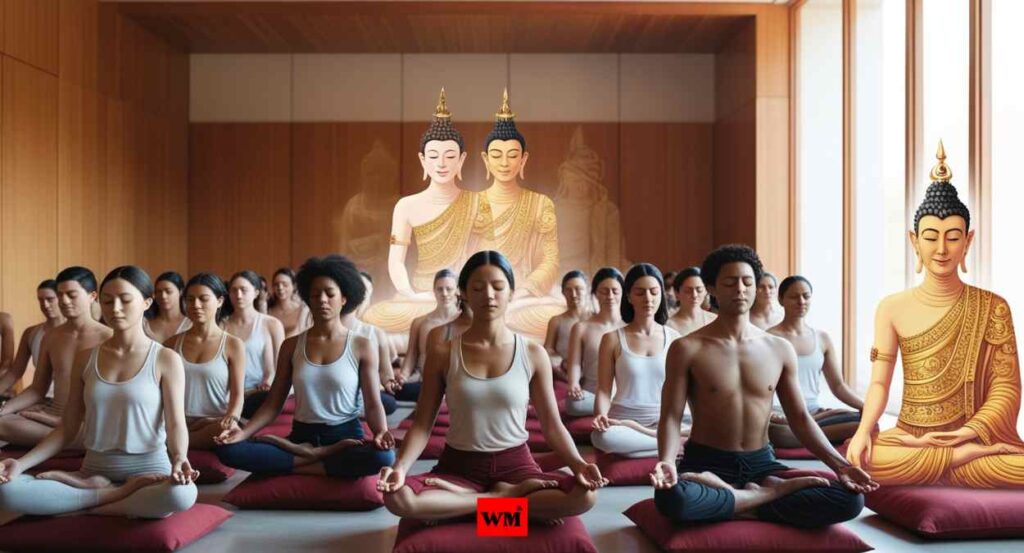
The Relevance of Vipassana Today
The meditation technique that Bimbisāra introduced to Pukkusāti continues to change lives today. Vipassana, as taught by S.N. Goenka in the tradition of Sayagyi U Ba Khin, offers a practical way to experience the benefits of the Buddha’s teachings.
Modern Vipassana Centers
Today, people from all walks of life can experience this ancient technique:
- Global Reach: Vipassana centers can be found worldwide, from India to the Americas.
- Accessibility: Courses are offered free of charge, maintaining the spirit of Dhamma as a gift.
- Non-Sectarian Approach: The technique is taught without religious trappings, making it accessible to all.
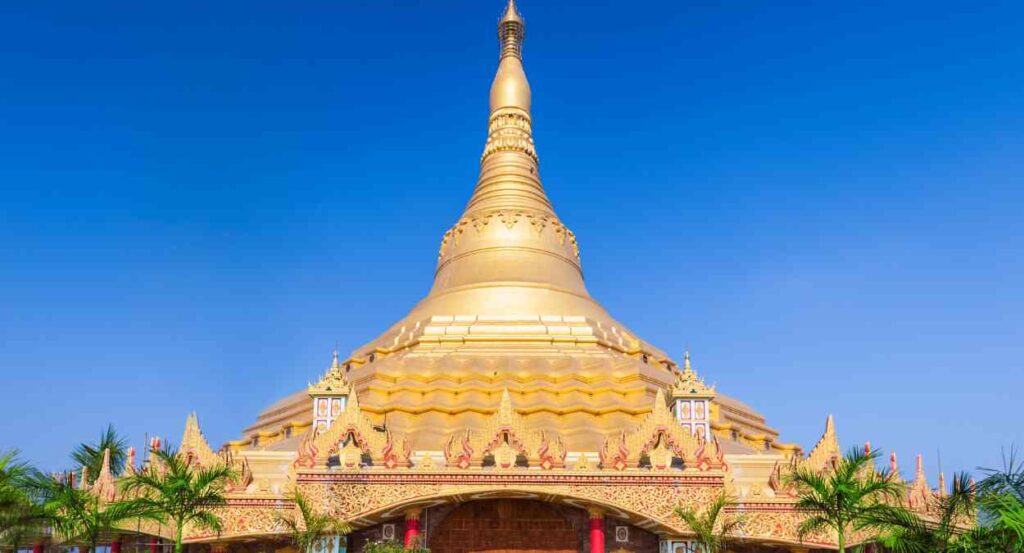
The Global Vipassana Pagoda: A Modern Monument
Just as Bimbisāra sought to share the gift of Dhamma, modern efforts continue to make these teachings available. The Global Vipassana Pagoda in Mumbai stands as a testament to this ongoing mission:
- Architectural Marvel: The world’s largest stone dome built without supporting pillars
- Meditation Hall: Capacity for thousands to meditate together
- Educational Center: Spreading awareness about Vipassana and its benefits
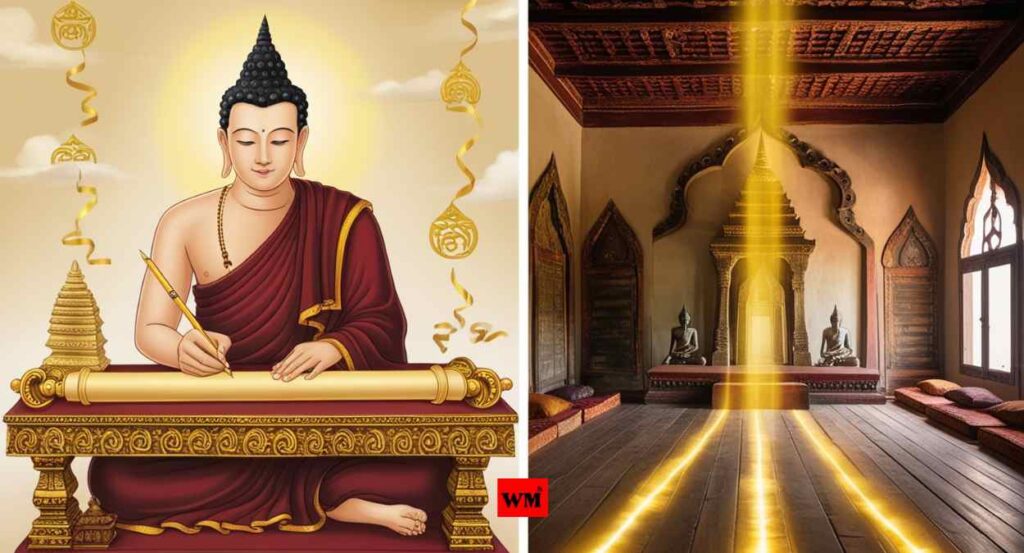
FAQs
Q. Who were Kings Bimbisāra and Pukkusāti? A. Bimbisāra was the king of Magadha, while Pukkusāti ruled Gandhāra. They formed a friendship through diplomatic exchanges, despite never meeting in person.
Q. What was the significance of the shawls sent by Pukkusāti? A. The exquisite Kashmir woolen shawls were a symbol of Gandhāra’s finest craftsmanship and served as a gesture of goodwill towards Magadha.
Q. How did Bimbisāra respond to Pukkusāti’s gift? A. Bimbisāra sent a golden scroll containing the Buddha’s teachings, considering the Dhamma to be the most valuable gift he could offer.
Q. What was included in Bimbisāra’s message about the Dhamma? A. The message contained an overview of the Buddha’s life, core teachings, meditation instructions, and an invitation for Pukkusāti to seek ordination.
Q. How did this exchange impact the spread of Buddhism? A. It helped introduce Buddha’s teachings to the Gandhāra region, contributing to the eventual spread of Buddhism into Central Asia.
Q. What is Vipassana meditation? A. Vipassana is an ancient Indian meditation technique that involves observing bodily sensations to gain insight into the nature of reality.
Q. How can one experience Vipassana today? A. Vipassana courses are offered worldwide at dedicated centers, teaching the technique as preserved in the tradition of Sayagyi U Ba Khin and S.N. Goenka.
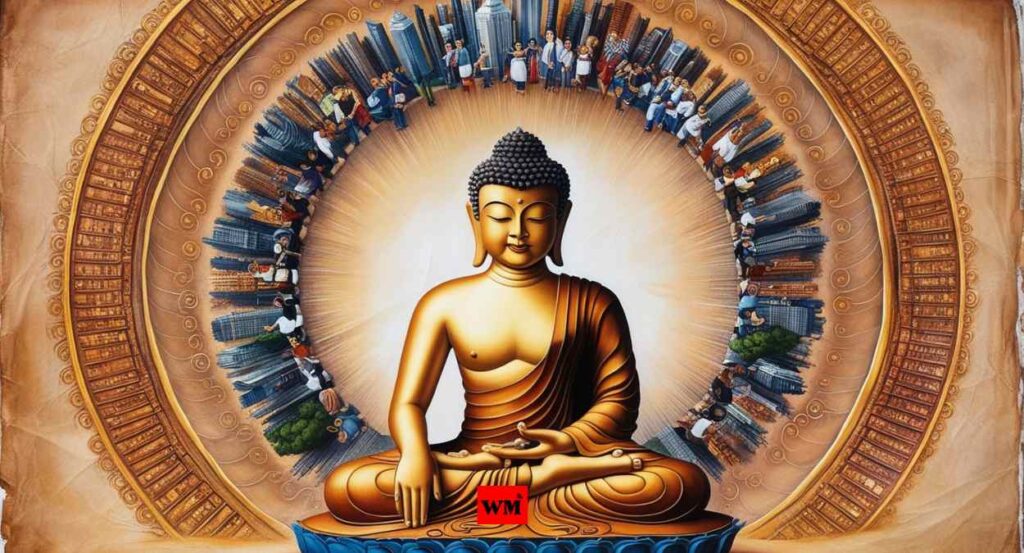
Conclusion
The friendship between Kings Bimbisāra and Pukkusāti, bridged by the gift of Dhamma, stands as a timeless example of how spiritual wisdom can transcend borders and transform lives. Their story reminds us that true wealth lies not in material possessions, but in the teachings that lead to inner peace and enlightenment.
As we reflect on this ancient tale, we’re invited to consider how we too can share the gift of Dhamma in our own lives, fostering understanding and compassion in an increasingly interconnected world.
Also Read :
The Remarkable Journey of S.N. Goenka: Illuminating the Path of Vipassana
The Art of Living: Vipassana Meditation for Inner Peace and Harmony
Celebrating Vesak: The Triple Blessed Full Moon Day and Vipassana Meditation
Vipassana Meditation Centre: Escape Suffering Through Vipassana’s Ancient Path to Peace
Vipassana Pune: Discover Inner Peace Through Vipassana Meditation in Pune









